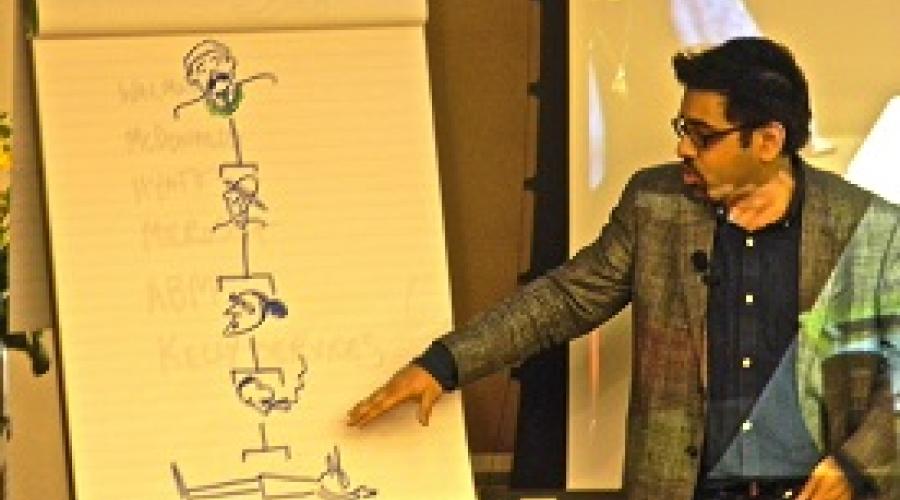
Crystal Ball
Contingent workers represent future of economy
Saket Soni, director of the National Guestworker Alliance, discussed the emergence of temporary, subcontracted and other kinds of unstable employment on Friday at a Worker Institute-organized event.
"The idea of the American worker has shifted," says Soni."Historically, the American worker was represented by the farmer or the autoworker.In more recent times, the iconic American worker was a technology worker.Today, we think of the domestic worker or the Wal-Mart cashier."
Permanent, good paying jobs are disappearing and being replaced by low-wage, temporary, part-time and subcontracted work, says Soni."Contingent workers have the crystal ball.They can see the direction of the future of work."
Soni was at Cornell's ILR School in Ithaca to meet with students and faculty to discuss a new Worker Institute initiative, the Precarious Workers Research Network. It is establishing new partnerships with networks of precarious workers organizations such as the National Day Laborers Organizing Network (NDLON) and the National Guestworker Alliance (NGA) to engage in research projects related to this emerging precarious workforce. Approximately 30 faculty, students and staff attended the meeting.
Valeria Treves of New Immigrant Community Empowerment (NICE) also spoke at the event.Treves described challenges facing day laborers. They include wage theft, unsafe working conditions, criminalization in their communities and the inability to get more stable work.
ILR Associate Professor Kate Griffith of the Worker Institute said, "Precarious work is insecure, unstable, temporary work that offers low wages and little or no benefits." Griffith says researchers and students at the Worker Institute are interested in better understanding the root causes of contingent employment as well as policy and organizing responses to address these issues.
In his speech, Soni noted that 42.6 million workers, approximately one third of the American workforce is now contingent workers."More and more workers are saying that this is happening to us."
The contingent workforce is not limited to day laborers, domestic workers, low wage workers and guest workers, Soni said.It includes adjunct instructors, freelancers, contract lawyers, technology workers and jobs that were once permanent. More workers, he said, are realizing they have a lot in common with guest workers and day laborers.
Soni described recent trends in the growth of the contingent workforce.The number of contingent workers in the United States has doubled in the past 10 years and the recession has exacerbated the issue.Two-thirds of jobs lost during the recession were middle-class jobs, but more than half of the jobs in the recovery were low-wage jobs.
Describing several theories behind this transformation of employment which included market forces and workers choosing flexibility, Soni said "corporate power is driving this change in employment, which shifts the cost and responsibility to the shoulders of workers."
"We need to go beyond our usual methods and create a new theory or framework of how to build a social movement to fight this phenomenon," he said, describing the need for new organizing and bargaining strategies as well as new policies that protect workers and create a new safety net.
Soni ended his comments at the ILR Conference Center with a call to rethink the idea of the working class and the need to create a multi-class movement."We need to connect the adjunct professor with the day laborer and bring Silicon Valley to the day laborer corner."
